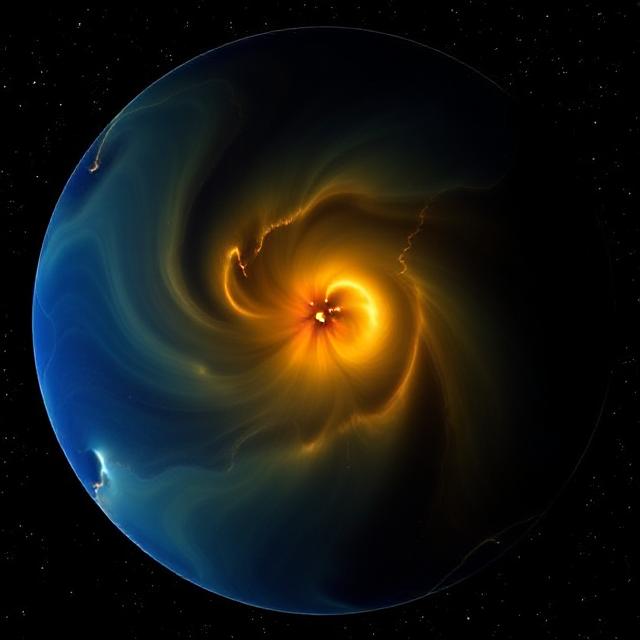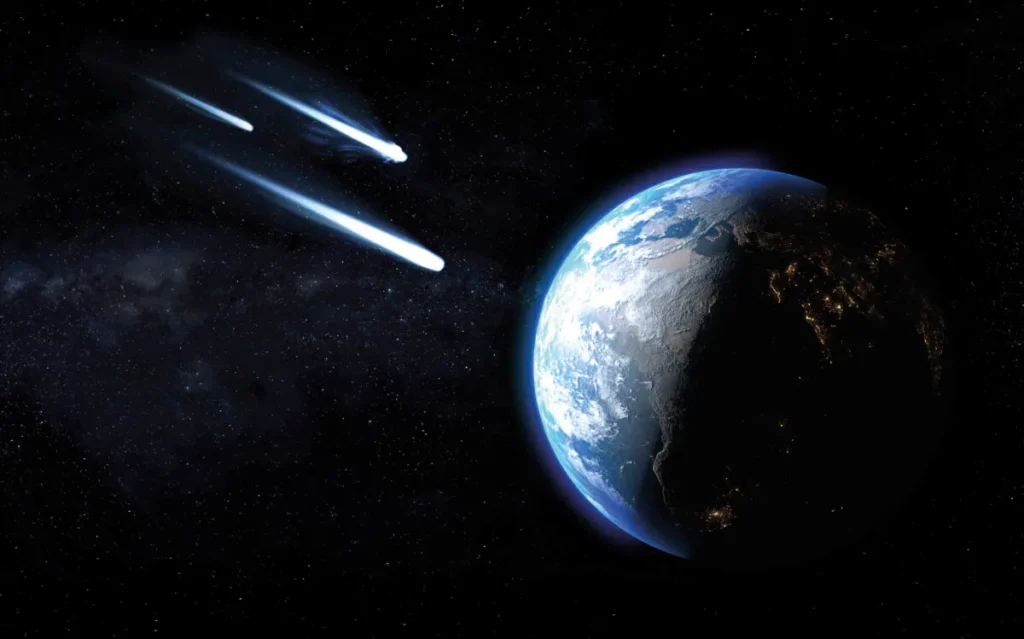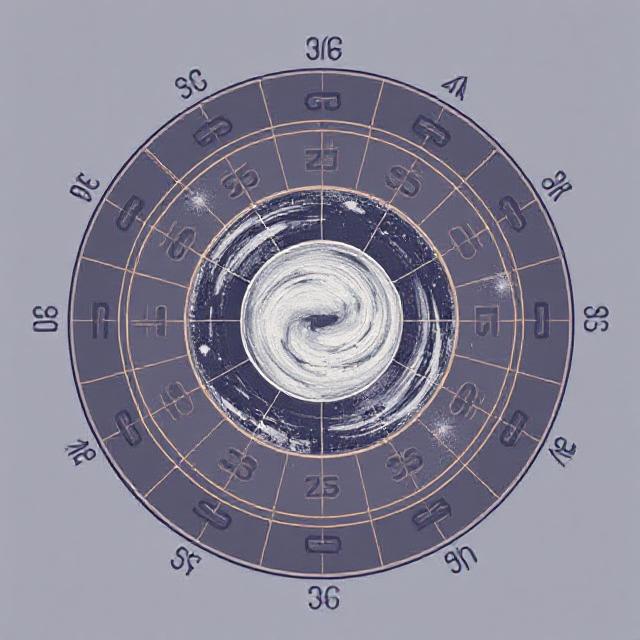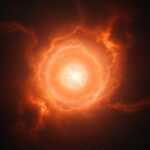Distant Disk Shows Ocean-Sized Water Evaporation Detected by JWST


Unveiling the Water Cycle in Orion’s Nebula
In the Orion constellation, a fascinating celestial phenomenon is unfolding around a youthful star surrounded by a dusty disk known as d203-506. The James Webb Space Telescope (JWST) has captured groundbreaking observations revealing that vast amounts of water are both being destroyed and replenished on a monthly basis in this region.
The Importance of Water in Space
Water is not only essential for life as we know it but also plays a crucial role in assessing the habitability of distant planets. Alongside energy, carbon, and other bioessential elements, the presence and abundance of water are pivotal for astronomers seeking to understand planetary environments.
A Dynamic Water Budget
Located over a thousand light-years from Earth, d203-506 serves as a laboratory for studying the intricate dance of water molecules. Within this star-forming disk, water undergoes a continuous cycle of destruction and reformation. Interestingly, this process alters the water’s composition by reducing the amount of deuterium, a heavy isotope of hydrogen. These findings could offer insights into why Earth’s oceans contain relatively low deuterium levels compared to those in the vicinity of newly formed stars.
The Protoplanetary Pressure Cooker
Benoît Tabone, a researcher at the University of Paris-Saclay, likens this disk to a pressure cooker. Hydrogen gas, energized by intense ultraviolet radiation from nearby massive stars, escapes at such a rapid pace that the entire disk might evaporate within a million years. This escaping gas forms a dense atmosphere around the disk, obscuring it from view. However, the intense radiation also causes the gas to emit infrared light, making it an ideal target for JWST’s instruments.
Precision Observations by JWST
The PDRs4All program, an international collaboration of scientists, is dedicated to exploring regions infused with ultraviolet radiation from massive stars. With JWST’s advanced capabilities, researchers can detect molecules with unprecedented precision. Marion Zannese, the lead author of the study, emphasizes the need for interdisciplinary expertise to fully comprehend the complex phenomena observed.
Two of JWST’s instruments, the Mid-Infrared Instrument (MIRI) and the Near Infrared Spectrograph (NIRSpec), played key roles in unraveling the water cycle. MIRI captured the destruction of water molecules by detecting photons emitted from hydroxyl radicals formed when UV radiation breaks apart water molecules. Meanwhile, NIRSpec revealed that these radicals recombine with hydrogen atoms to create new water molecules, at a rate outpacing their destruction.
A Glimpse into Earth’s Watery Past


This cyclical process might not directly contribute to planet formation, as much of the water is lost from the disk. However, similar mechanisms likely occurred in our own solar system’s history. While Earth’s water initially formed under frigid conditions, a portion likely evaporated and reformed within the young Sun’s protoplanetary disk, akin to the processes observed in d203-506.
As part of their ongoing research, Tabone, Zannese, and the PDRs4All team are eager to delve deeper into the region’s complex chemistry using additional JWST data. “We aim to uncover everything we can about these small, excited molecules,” Zannese states, as they continue to unravel the mysteries of the cosmos.










